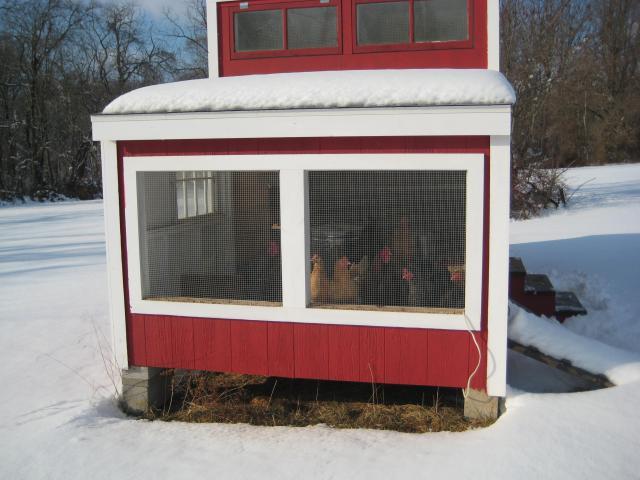You want lots of air exchange(1 sqft per bird), most of it up high for the humidity to escape, but no direct drafts on the roost area.Wow- great discussion here- thank you so much! Well, as I said, I *do* live in RI... on an island in Narragansett Bay. Thus, our temps only get down to the single digits while the rest of the state can get colder. However, this also means that the humidity is higher.
I worry about those Nor'easters. Our house is slightly diagonal to the compass. The coop is going against the east wall which is angled slightly to the south. I am putting a big (closable) window in the south side for summer ventilation and winter sun. The west side will be flat up against the house wall, and the north side will have the egg door, nest boxes and roost, but no windows or vents. The vents will be in the side up against the house (with still 6 inches for clearance) and the eaves (and two small windows that do not open) in the front (east side) of the coop. It's 4x8 for 5 large breed birds in case I get more later. Is the large size of the coop going to be an issue? Should I try to build some kind of a baffle to hold their body heat like a previous poster did? I also have to consider insulation against heat- it gets hot in the summer up against that wall.
---> What is the difference between "well ventilated" and "draft-free" ?
In other news, I really have to get on the ball- I found a chick wandering around the room today. Time to cover the brooder or get them out of there! They are now 4 weeks old. Here's the coop so far, with my daughter and her boyfriend helping:
Site placement/prevailing winds can change where the best place is for vent openings. High against the house may work great....or you may get swirling wind there.
Best to have lots of them that can be closed off during windstorms.
Sometimes you won't know how the air flows until you can observe it.
4x8 should be ok for 5 LF birds....depending on how big and where your feeder and waterers are and how much they may need to be confined in the winter.
The 4 sqft per bird in coop rule of thumb is a minimum..depends on flock dynamics and how much time room they outside the coop.


